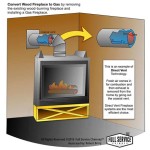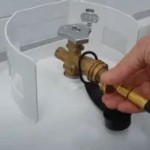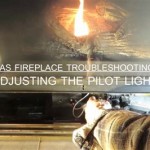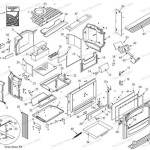Fireplace Insert Brick Panels: An In-Depth Guide
Fireplace inserts offer a practical and aesthetically pleasing solution for upgrading an existing fireplace. They provide increased heating efficiency, improved safety, and a refreshed visual appeal. A crucial component of many fireplace inserts is the brick panel, which lines the interior of the firebox. These panels serve functional and decorative purposes, contributing significantly to the overall performance and aesthetic of the insert.
This article will delve into the various aspects of fireplace insert brick panels, covering their purpose, materials, styles, maintenance, and replacement considerations. Understanding these elements is essential for homeowners looking to install, maintain, or upgrade their fireplace inserts.
Fireplace inserts are self-contained heating appliances designed to be installed within an existing fireplace opening. They typically consist of a firebox, a door, a venting system that connects to the existing chimney, and often a blower to circulate heated air. Inserts are available in various fuel types, including wood, gas, and electric. Brick panels are typically found in wood and gas inserts, although decorative panels mimicking brick can also be found in some electric models.
The primary function of brick panels within a fireplace insert is to protect the metal firebox from the intense heat of the fire. The panels act as a thermal barrier, absorbing and reflecting heat, which helps to prolong the lifespan of the insert. Without this protection, the metal firebox would be subjected to extreme temperature fluctuations, leading to warping, cracking, and premature failure.
Secondly, brick panels enhance the radiant heat output of the fireplace insert. Brick, particularly firebrick, has excellent heat retention properties. It absorbs heat from the fire and continues to radiate it into the room even after the fire has died down. This contributes to a more consistent and comfortable heating experience.
Finally, brick panels add a significant aesthetic element to the fireplace insert. They provide a traditional and classic look that complements a wide range of interior design styles. The panels can be chosen in various colors, textures, and patterns to match the homeowner's preferences.
Materials Used in Fireplace Insert Brick Panels
The choice of material for fireplace insert brick panels is critical to their performance and longevity. The most common material is firebrick, but other options are available, each with its own set of characteristics.
Firebrick is a type of refractory brick specifically designed to withstand extremely high temperatures. It is made from a mixture of clay and other materials, such as alumina and silica, which are fired at very high temperatures to create a dense and durable product. Firebrick is known for its excellent heat resistance, thermal mass, and ability to withstand thermal shock (rapid temperature changes). These properties make it ideal for use in fireplace inserts and wood-burning stoves.
The composition of firebrick can vary depending on the manufacturer and intended application. Some firebricks are designed for higher temperatures than others. When selecting firebrick for fireplace insert panels, it's crucial to choose a product that is specifically rated for the temperatures generated by the insert.
In addition to firebrick, some fireplace inserts may use refractory cement or cast refractory materials for their panels. Refractory cement is a high-temperature mortar that can be used to bond firebrick together or to create a monolithic refractory lining. Cast refractory materials are pre-formed shapes made from a mixture of refractory cement and aggregates. These materials can be used to create custom panel designs or to repair damaged firebrick.
While less common, some older or lower-end fireplace inserts may use standard clay brick. Standard clay brick is not as heat-resistant as firebrick and is more prone to cracking and spalling (surface flaking) when exposed to high temperatures. Therefore, it is generally not recommended for use in fireplace insert panels, especially in high-heat applications.
The insulation value of the brick panel material is important for the efficiency of the fireplace insert. Materials with high thermal mass, like firebrick, absorb and store heat effectively, releasing it gradually over time. This can lead to more consistent heating and reduce the need for frequent refueling.
Styles and Aesthetics of Fireplace Insert Brick Panels
Beyond their functional properties, fireplace insert brick panels play a significant role in the overall aesthetic of the fireplace. They are available in various styles, colors, and textures to complement different interior design schemes.
Traditional brick patterns, such as herringbone and running bond, are popular choices for fireplace insert panels. These patterns create a classic and timeless look that blends well with traditional and transitional decor. Herringbone features bricks arranged in a distinctive V-shaped pattern, while running bond consists of bricks laid in a staggered, overlapping arrangement.
Stacked brick patterns, where bricks are laid directly on top of each other without any offset, offer a more contemporary and minimalist aesthetic. This style is well-suited for modern and contemporary homes. The clean, straight lines of stacked brick create a sleek and uncluttered appearance.
Some fireplace insert manufacturers offer brick panels with unique textures, such as raised brick, tumbled brick, or textured concrete. These textures add depth and visual interest to the fireplace, creating a more tactile and inviting feel. Raised brick panels feature bricks that protrude slightly from the surface, while tumbled brick panels have a worn and weathered appearance.
The color of the brick panels is another important factor to consider. Red brick is a classic choice that evokes a sense of warmth and tradition. However, brick panels are also available in various other colors, including white, gray, brown, and black. White brick panels can create a bright and airy feel, while gray or black brick panels offer a more modern and sophisticated look.
The grout lines between the brick panels also contribute to the overall aesthetic. Wide grout lines can create a more rustic and textured appearance, while narrow grout lines offer a cleaner and more contemporary look. The color of the grout can also be customized to complement the brick panels.
The choice of brick panel style and finish should be carefully considered to ensure that it complements the surrounding interior design. Factors such as the color of the walls, the flooring, and the furniture should all be taken into account. Ultimately, the goal is to create a fireplace that is both functional and aesthetically pleasing.
Maintenance and Replacement of Fireplace Insert Brick Panels
Like any component of a fireplace insert, brick panels require periodic maintenance and may eventually need to be replaced. Proper care and maintenance can prolong the lifespan of the panels and ensure optimal performance. Regular inspections are crucial to identifying potential problems early on.
Regular cleaning is essential to remove soot, ash, and creosote buildup from the brick panels. A soft brush or vacuum cleaner can be used to remove loose debris. For more stubborn stains, a mild detergent and water solution can be used. It's important to avoid using harsh chemicals or abrasive cleaners, as these can damage the surface of the brick.
Inspecting the brick panels for cracks, chips, or spalling is also important. Minor cracks can sometimes be repaired with refractory cement, but more significant damage may require panel replacement. Spalling, or surface flaking, is a sign that the brick is deteriorating and may eventually need to be replaced.
The frequency of panel replacement will depend on several factors, including the quality of the brick, the frequency of use, and the type of fuel burned. Generally, firebrick panels can last for several years with proper care. However, under heavy use or with the burning of wet or unseasoned wood, the panels may need to be replaced more frequently.
Replacing fireplace insert brick panels is a task that can be undertaken by a homeowner with some DIY experience, but it's often best left to a qualified technician. The process typically involves removing the old panels, cleaning the firebox, and installing the new panels using refractory cement. It's important to follow the manufacturer's instructions carefully when replacing brick panels.
When selecting replacement brick panels, it's crucial to choose the correct size, shape, and material. The new panels should be specifically designed for the fireplace insert model. Using the wrong type of brick can compromise the performance and safety of the insert. Purchasing replacement panels from a reputable supplier is advisable to ensure that they meet the necessary standards.
Proper venting is essential for maintaining the longevity of fireplace insert brick panels. A properly functioning chimney will allow for the efficient removal of smoke and gases, reducing the buildup of creosote and other deposits on the panels. Regular chimney inspections and cleaning are recommended to ensure optimal venting.
Burning seasoned firewood is essential for reducing creosote buildup. Wet or unseasoned wood produces more smoke and creosote than seasoned wood, which can accelerate the deterioration of the brick panels and increase the risk of chimney fires. Firewood should be properly dried for at least six months before burning.

Pleasant Hearth Firebrick Panel Set For 36 In Zero Clearance Ventless Dual Fuel Fireplace Insert Zrp360 The Home Depot

Vintage Red Ceramic Fiber Brick Panel For 450 Series Outdoor Fireplace Insert Model Flb450 Vr Com

Pleasant Hearth Universal Circulating Zero Clearance 36 In Ventless Dual Fuel Fireplace Insert Phzc36c The Home Depot

Pleasant Hearth Universal Circulating Zero Clearance 36 In Ventless Dual Fuel Fireplace Insert Phzc36c The Home Depot

Napoleon Decorative Brick Panels Westminster Grey Standard For Elevati Fireplaces Usa

Pleasant Hearth Universal Radiant Zero Clearance 42 In Ventless Dual Fuel Fireplace Insert Phzc42f The Home Depot

Napoleon Decorative Brick Panels Westminster Herringbone Dbpx36wh North Country Fire

Gallery Rustic Brick Fireplace Chamber Panels Flames Co

Brick Boards Heat Resistant Insulating Panels Made From Real Slips

Fireplace Chamber Lining Panels Brick Bond Solutions








